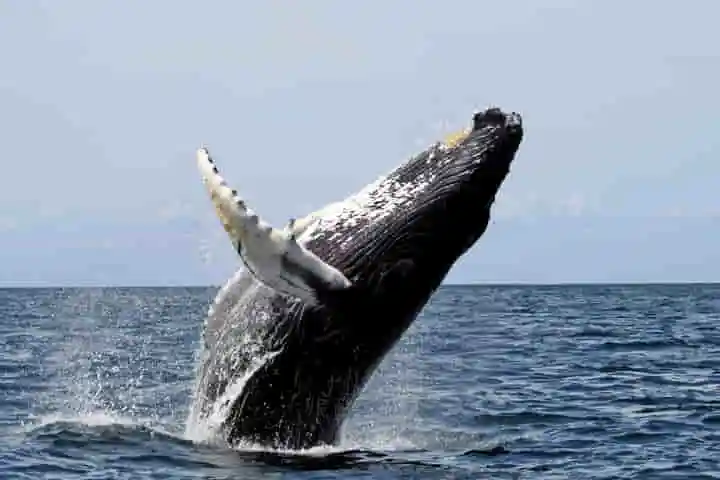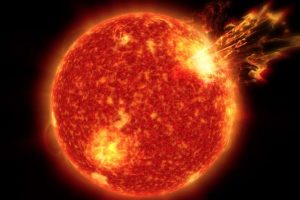Fresh study on baleen whales has brought to light a startling fact that these enormous mammals of water on an average eat three times more food than what was estimated in the past. Baleen whales include the humpback, fin and blue whales. This spells out well for the environment and the world as baleen whales by eating more, play a vital and bigger role in increasing the nutrient content and circulation of the ocean and its carbon uptake, according to an article in smithsonianmag.com.
Curator of Fossil Marine Mammals at the Smithsonian’s National Museum of Natural History and also the co-author on this new paper, Nicholas Pyenson observed: “Our results say that if we restore whale populations to pre-whaling levels, we'll restore a huge amount of lost function to ocean ecosystems. It's the clearest read yet about the massive role of large whales on our planet.”
The quantity of the food consumed by whales was based on educated guesses, said Matthew Savoca, who is the lead author of the study and a marine ecologist and postdoctoral fellow at Stanford University.
With climate change rendering the oceans hotter leading to loss of several species, the researchers required better data to know how much baleen whales ate to make forecasts and also find ways to ensure survival of the endangered species.
In order to do that, Savoca, Pyenson and other members of the team checked the statistics gathered directly by following what whales ate. For a period between 2010 and 2019, they tagged whales in the Atlantic, Pacific and Southern Oceans totalling 321 with a device. Each of these devices had a camera, GPS tracker, accelerometer and it computed every individual’s 3D movement, thereby allowing scientists to know feeding behaviour and patterns of these mammals.
Also read: The strange case of Killer Whales Being Chased by Pilot Whales
To make the study more exhaustive, drone photographs of 105 whales were compiled. This quantified the amount of water the whale took in and thus calculating the krill which the creature filtered. Further, the scientists also watched a number of whales in the wild feeding, using sound waves to calculate the quantity of krill and other prey species they ate.
Such extensive data helped the team to get the big picture about the diet of baleen whales. It was discovered that while the right whales of North Atlantic ate five metric tons, nearly about 11,000 pounds, of plankton each day, the blue whales in eastern North Pacific consumed 16 metric tons daily. It was also found that blue, fin and humpback populations of the animals who lived in the Pacific Ocean along the Western United States required more than two million tons of prey annually.
Having garnered these details, the scientists then probed into the quantity of iron which the whales returned to the water of the oceans through faeces. Iron is a vital nutrient that helps phytoplankton bloom in the Southern Ocean. Going by the earlier analysis which found that whale poop contains nearly 10 million times the amount of iron found in seawater, the authors of the study worked out that the Southern Ocean whales poop let out nearly 1,200 metric tons of iron back into the water.
Commenting on this, Savoca said: “Blue and fin whales are the size of a Boeing 737, eating and pooping far from land in a system that is iron-limited in many places.”
Also read: Rhino horns to be injected with radioactive material to deter illegal poaching in South Africa
As these mammals breathe air, they need to be close to the water surface and thus the iron they excrete too remains in the ocean water upper levels. This iron can be used by plankton, krill, and other microscopic creatures – all of whom are important and necessary for the marine ecosystem.
With nearly two to three million whales decimated because of industrial whaling in the 20th Century, the study team guessed whales in the Southern Ocean recycled around 12,000 metric tons of iron prior to this drastic fall in their population. They arrived at the reasoning that once the population of the whales reaches the pre-industrial stage, it could lead to an increase in phytoplankton numbers.
Interestingly, as phytoplankton draw from the atmosphere carbon dioxide during their growth, this could greatly benefit in solving the world greenhouse gas problem. Pyenson remarked: “Helping whales recover could restore lost ecosystem functioning and provide a natural climate solution. Our results say that if we restore whale populations to pre-whaling levels, we'll restore a huge amount of lost function to ocean ecosystems, which is something close to a natural climate solution.”




















